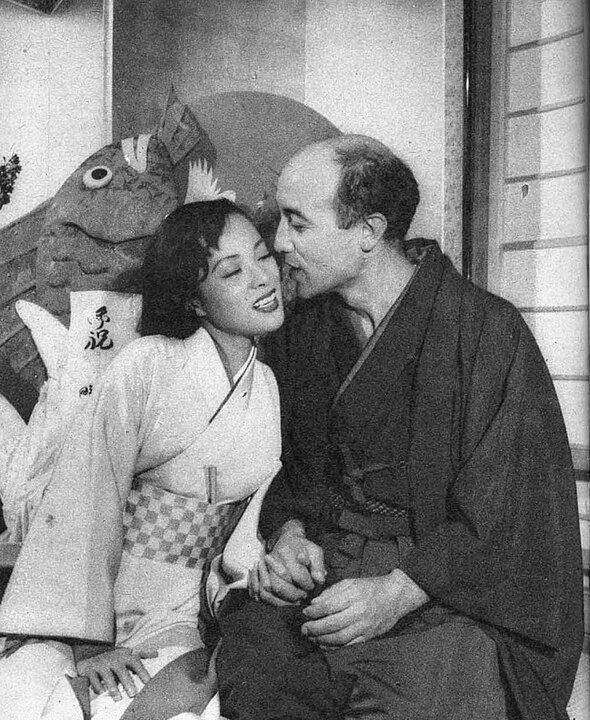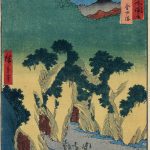
When you think about influential artists and performers from the 20th century, names like Isamu Noguchi and Yoshiko Yamaguchi might pop up. These two creative powerhouses made significant impacts in their respective fields. Noguchi was a renowned sculptor and designer, while Yamaguchi was a celebrated actress and singer. Their paths crossed in a fascinating way, resulting in a brief yet meaningful relationship. But how did their worlds collide, and why does their story still matter today?
The Early Lives of Isamu Noguchi and Yoshiko Yamaguchi
Isamu Noguchi was born in Los Angeles in 1904 to an American mother and a Japanese father. His multicultural upbringing played a huge role in shaping his artistic vision. Noguchi spent much of his early life traveling between the United States and Japan. This exposure to different cultures influenced his work. He believed that art could transcend boundaries, which is why his sculptures often mix Eastern and Western styles.
Meanwhile, Yoshiko Yamaguchi came into the world in 1920 in Manchuria. At that time, it was under Japanese rule. She grew up in a Japanese household but absorbed Chinese culture as well. This unique background made her a natural bridge between two worlds. Her career took off in China, where she acted in propaganda films during World War II under the stage name Ri Kōran. Her ability to speak Chinese fluently made her a star in both Japan and China.
Both Noguchi and Yamaguchi experienced the complexity of living between cultures. This aspect of their lives helped them connect on a personal level. Their relationship began in the late 1940s, during a time when both were searching for their places in a rapidly changing world. But what drew them together, and how did their connection influence their work and lives?
Noguchi’s Artistic Journey
Noguchi’s artistic journey started with an apprenticeship under the renowned sculptor Gutzon Borglum. Yes, the same Borglum who carved Mount Rushmore. But Noguchi soon realized he needed more than just technical skills. He wanted to create art that spoke to people on a deeper level. This drive led him to Paris, where he studied under the legendary modernist sculptor Constantin Brâncuși.
Under Brâncuși’s mentorship, Noguchi developed a love for abstraction and form. He began experimenting with different materials like wood, stone, and metal. Each medium offered a new way to express his vision. Noguchi believed that sculpture should not just be seen but experienced. He wanted people to feel something when they interacted with his art.
One of Noguchi’s most famous works is his sculpture “Red Cube,” which stands in New York City. The vibrant red color and geometric shape make it an iconic piece of public art. It invites people to walk around it, view it from different angles, and even touch it. This interactivity is a hallmark of Noguchi’s work.
Throughout his career, Noguchi worked on a variety of projects. He designed furniture, theater sets, and even public parks. Each project reflected his belief in the power of design to shape human experience. But how did his relationship with Yamaguchi influence his artistic journey?
Yamaguchi’s Stardom and Struggles
Yamaguchi’s rise to fame in the 1930s and 1940s was meteoric. She captivated audiences with her acting talent and singing voice. Her roles in propaganda films were complex, as they were designed to promote Japanese imperial interests. Yet, her performances often transcended their original intent, showing her skill and depth as an actress.
After World War II, Yamaguchi faced criticism for her involvement in these films. Many viewed her as a symbol of Japanese imperialism. She had to reinvent herself to survive in the post-war world. This was not easy, but her resilience and talent saw her through.
In the 1950s, Yamaguchi moved to Hollywood and took on the stage name Shirley Yamaguchi. She appeared in several films, including “House of Bamboo” and “Japanese War Bride.” These roles helped her break away from her past and forge a new path in her career. Her performances were praised for their emotional depth and authenticity.
Despite her success in Hollywood, Yamaguchi eventually returned to Japan. There, she took on a new role as a politician and diplomat. She used her fame and influence to advocate for peace and cultural understanding. Her life journey was a testament to her ability to adapt and thrive in the face of adversity.
Their Relationship and Collaboration
Noguchi and Yamaguchi’s relationship began in the late 1940s when they met in New York City. Both were at pivotal points in their careers. Noguchi was already an established artist, while Yamaguchi was seeking to rebuild her career. Their shared experiences of living between cultures helped them connect on a deep level.
The relationship between Noguchi and Yamaguchi was more than just a romantic one. They inspired each other creatively. Noguchi often spoke of how Yamaguchi’s strength and resilience influenced his work. Her ability to navigate different cultural landscapes resonated with his own artistic vision.
During their time together, Noguchi created several portraits of Yamaguchi. These works captured her elegance and strength. One such portrait is a bust made of marble, showcasing Noguchi’s skill in blending abstraction with realism. The piece highlights Yamaguchi’s grace and poise, reflecting the admiration Noguchi had for her.
Their collaboration extended beyond the personal. They explored the idea of creating a cultural center in Japan, where art and performance could come together. This dream, however, remained unrealized due to the challenges they faced. Yet, the impact of their collaboration left a lasting impression on both their careers.
Cultural Impact and Legacy
Noguchi and Yamaguchi’s relationship symbolized the blending of cultures. Their lives and work showed that art and performance could transcend boundaries. Noguchi’s sculptures incorporated elements from different cultures, creating a unique visual language. Yamaguchi’s performances bridged the gap between East and West, challenging stereotypes and prejudices.
Their legacy is evident in how they influenced future generations of artists and performers. Noguchi’s approach to art and design continues to inspire creators around the world. His belief that art could transform public spaces laid the groundwork for modern public art installations.
Yamaguchi’s journey from actress to politician demonstrated the power of art to effect social change. Her advocacy for peace and cultural understanding remains relevant today. Her story serves as a reminder of the importance of resilience and adaptability in the face of adversity.
In many ways, Noguchi and Yamaguchi’s relationship reflected the broader cultural shifts happening in the 20th century. They navigated a world that was rapidly changing, using their art and performance to challenge conventions and inspire new ways of thinking.
Challenges and Triumphs
Noguchi and Yamaguchi faced numerous challenges in their careers and personal lives. Noguchi often struggled with acceptance in both American and Japanese art circles. His mixed heritage made it difficult for him to fit into either world. Yet, he used this outsider status to his advantage, creating art that was uniquely his own.
Similarly, Yamaguchi dealt with the fallout of her early career in propaganda films. She faced criticism and suspicion, both in Japan and abroad. Her ability to reinvent herself as a Hollywood actress and later as a politician showcased her determination and resilience.
Despite these challenges, Noguchi and Yamaguchi found triumphs in their work and personal lives. Noguchi’s art gained international recognition, earning him accolades and commissions worldwide. His innovative designs for furniture and public spaces continue to influence architects and designers today.
Yamaguchi’s political career allowed her to make a meaningful impact on society. Her work in promoting cultural exchange and understanding helped bridge divides between Japan and the world. She used her platform to advocate for issues she cared about, leaving a lasting legacy.
Lessons from Their Lives
Noguchi and Yamaguchi’s lives offer valuable lessons for anyone navigating the complexities of a multicultural world. Their ability to adapt and thrive in different cultural contexts is a testament to their resilience and creativity. They showed that embracing one’s unique identity can lead to profound artistic and personal growth.
One key lesson from their relationship is the importance of collaboration. Noguchi and Yamaguchi supported and inspired each other, pushing one another to explore new ideas and possibilities. Their partnership demonstrates the power of creative synergy in overcoming challenges.
Their story also highlights the role of art and performance in bridging cultural divides. Both used their talents to challenge stereotypes and promote understanding between different communities. They showed that art can be a powerful tool for social change, encouraging dialogue and empathy.
Finally, Noguchi and Yamaguchi’s lives remind us of the importance of perseverance. Despite facing numerous obstacles, they continued to pursue their passions and make a difference in the world. Their determination and resilience serve as an inspiration to all who face adversity.
Conclusion
Isamu Noguchi and Yoshiko Yamaguchi’s relationship was brief, but its impact was profound. Their lives and work continue to inspire artists, performers, and individuals worldwide. They showed that art and performance can transcend cultural boundaries, bringing people together in new and meaningful ways. Their legacy lives on in their work and the lessons they left behind, reminding us of the power of creativity and resilience in a complex and ever-changing world.




